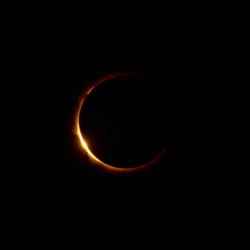Lunar Eclipse
A lunar eclipse is a celestial event that occurs when the Earth positions itself directly between the Sun and the Moon, causing the Earth’s shadow to obscure the Moon. This alignment can only occur during a full moon, when the Moon is on the opposite side of Earth from the Sun. Lunar eclipses are divided into three types: total, partial, and penumbral.

Types of Lunar Eclipses
Total Lunar Eclipse
A total lunar eclipse takes place when the Moon is completely covered by the Earth’s umbra, the central and darkest part of its shadow. During this event, the Moon can take on a reddish hue, commonly referred to as a "blood moon," due to Rayleigh scattering of sunlight through the Earth’s atmosphere.
Partial Lunar Eclipse
In a partial lunar eclipse, only a portion of the Moon enters the Earth’s umbra. This results in a part of the Moon appearing darkened while the remainder remains brightly lit by direct sunlight. Partial eclipses are more common than total eclipses.
Penumbral Lunar Eclipse
A penumbral lunar eclipse occurs when the Moon passes through the Earth’s penumbra, the outer part of its shadow. This type of eclipse is subtle and often goes unnoticed because the shading on the Moon’s surface is very faint.
Scientific Importance
Lunar eclipses have been instrumental in developing our understanding of celestial mechanics. They provide opportunities to study the Earth's atmosphere, as the sunlight passing through it during a total eclipse can reveal atmospheric composition. Additionally, eclipses have historically helped astronomers calculate the Earth-Moon distance and verify the roundness of the Earth.
Historical and Cultural Significance
Lunar eclipses have held significant meaning across various cultures. In ancient times, they were often seen as ominous events, symbolizing chaos or change. Many myths and legends have been woven around eclipses, attributing them to the actions of deities or supernatural beings.
Observing a Lunar Eclipse
Unlike solar eclipses, lunar eclipses are safe to view with the naked eye. They can be observed from anywhere on the night side of the Earth, making them accessible to a wide audience. Enthusiasts often gather to witness the event, sometimes using telescopes or cameras to enhance the experience.
Related Phenomena
Lunar eclipses are part of a larger category of eclipses, which also includes solar eclipses. The Perseid Meteor Shower and various supernovae also contribute to the rich tapestry of observable celestial events. The cyclic nature of eclipses is part of the broader study of orbital mechanics, which examines how celestial bodies move under the influence of gravity.
See Also
- Orbital Mechanics
- Solar Eclipse
- Perseid Meteor Shower
References
For a comprehensive understanding of lunar eclipses and their effects on ancient cultures, consult the Celestial Lore Compendium and explore the connections between eclipses and Astrological Interpretations.